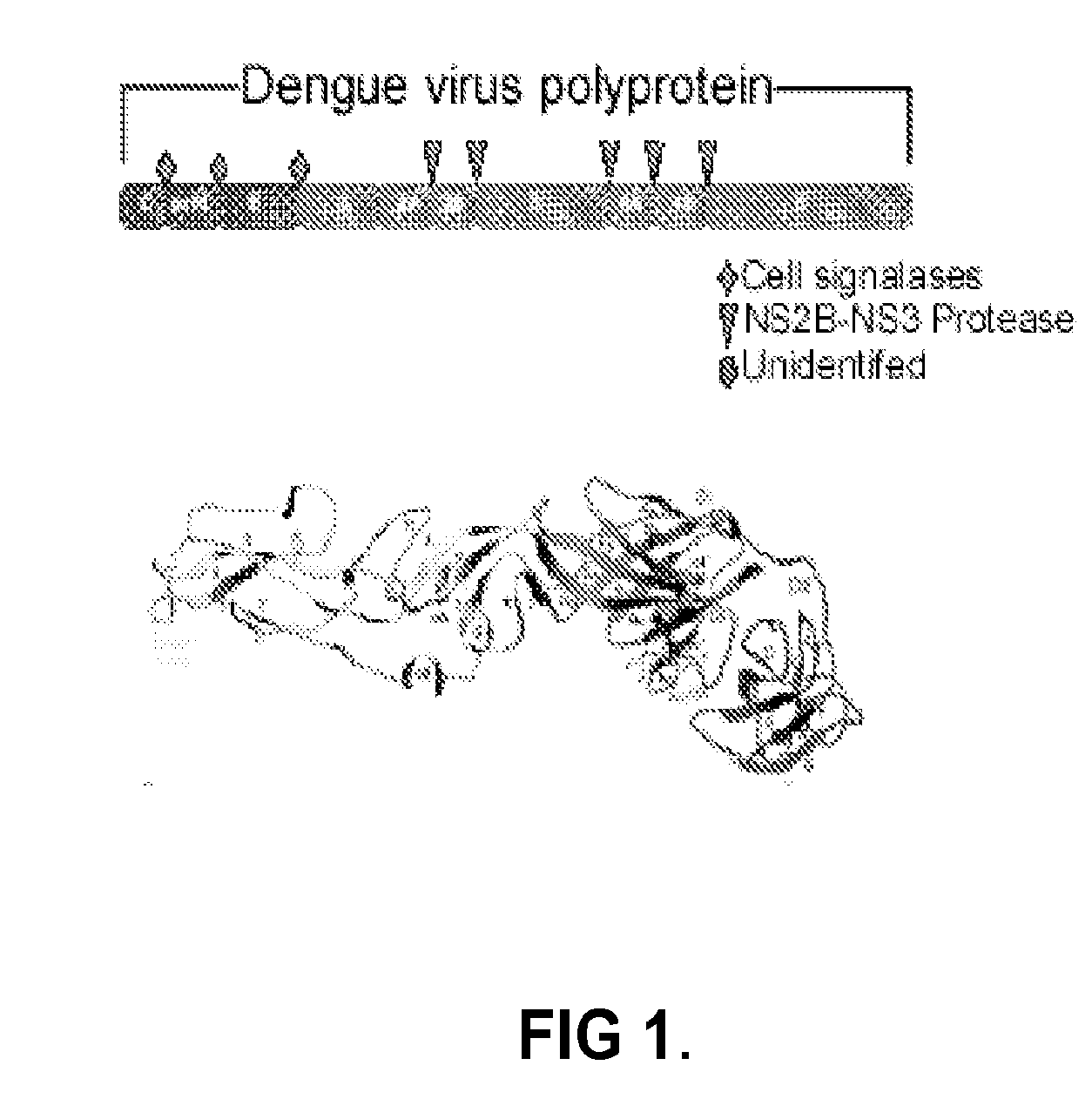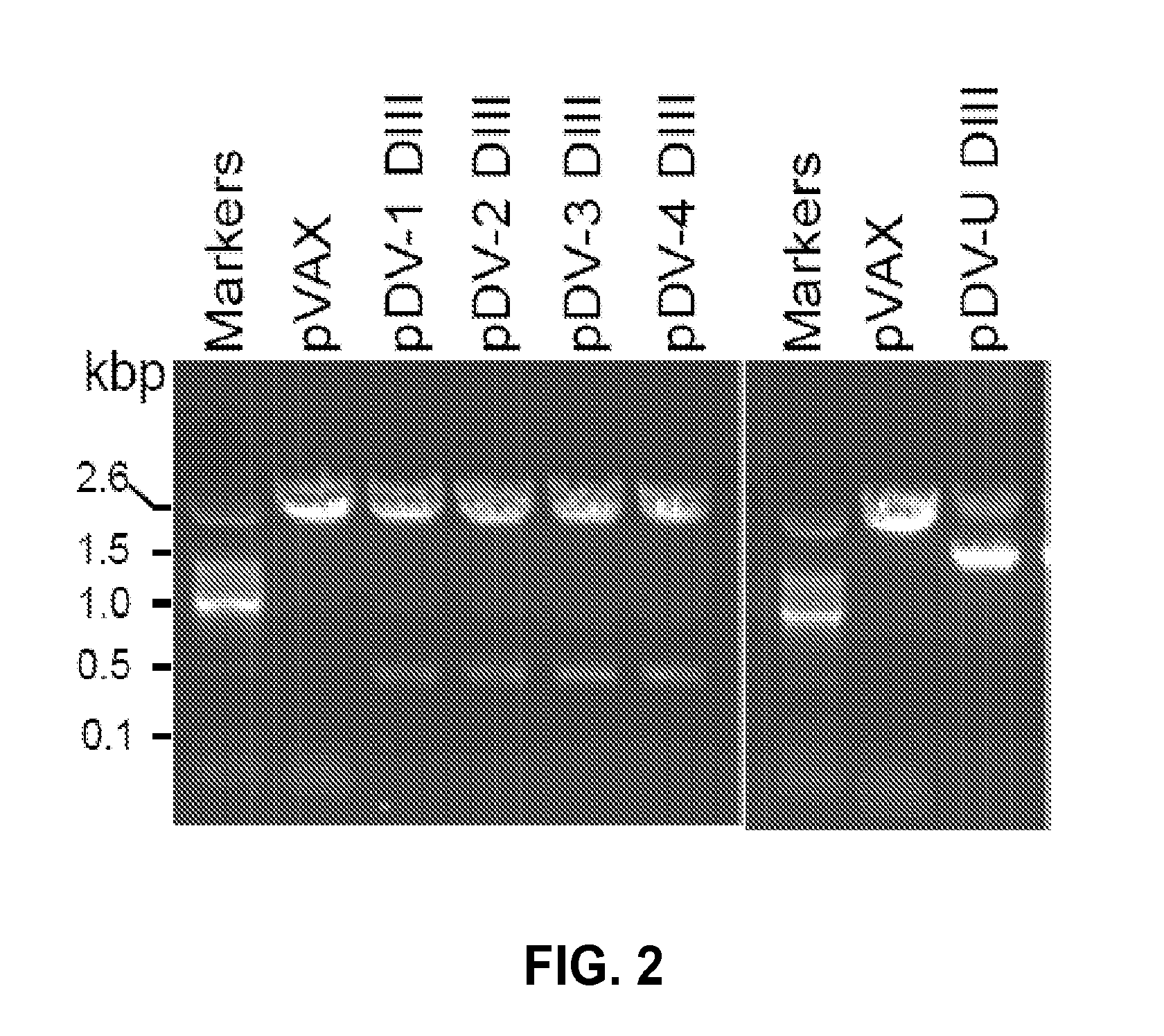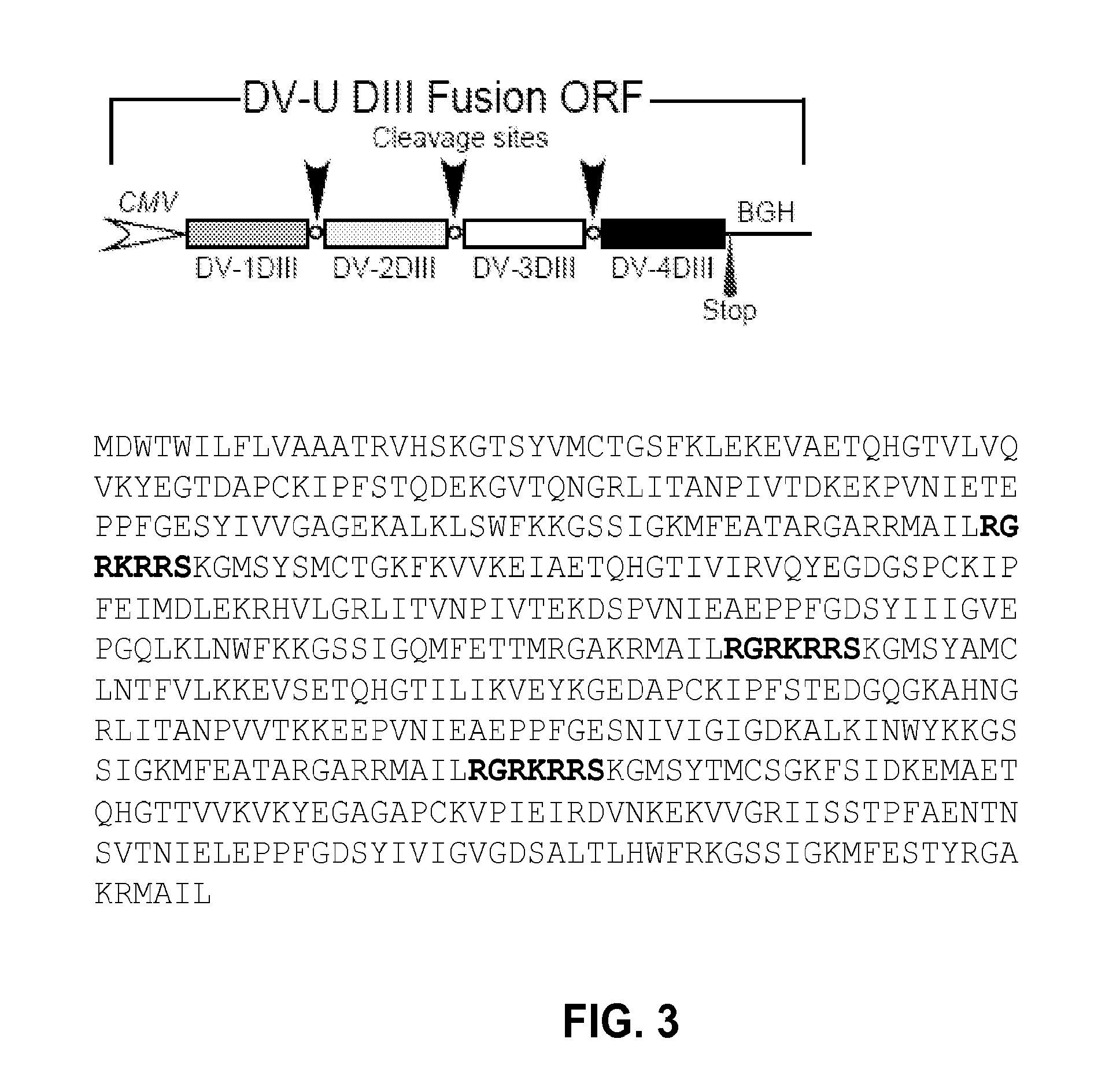Novel vaccines against multiple subtypes of dengue virus
a dengue virus and vaccine technology, applied in the field of dengue vaccines, can solve the problems of poor surveillance of dengue/dhf, 2.5 billion people are at risk of infection in subtropical and tropical regions of the world, and the number of dengue virus cases that occur each year cannot be estimated
- Summary
- Abstract
- Description
- Claims
- Application Information
AI Technical Summary
Benefits of technology
Problems solved by technology
Method used
Image
Examples
example 1
Dengue DIII Expression Constructs
[0105]Approximately 15 subtype sequences were collected from different geographical populations from GeneBank to avoid sampling bias. All sequences used were non-recombinant. Multiple alignment of Dengue envelope (Dengue E) DIII sequences was carried out using the application Clustal X (version 1.81), in which pair-wise alignment parameters were set to the dynamic slow-accurate programming, using 10 as the gap opening penalty and 0.1 as the gap extension penalty. Multiple alignment parameters included a gap extension penalty equal to 0.2. The Dengue E consensus nucleotide sequence was obtained after performing multiple alignment and a few minor manual adjustments. Deduced amino acid sequences were used to guide the introduction of alignment gaps so that they were inserted between codons. Codon optimization and RNA optimization was performed by using GeneOptimizer (GENEART, Germany). The codon optimized synthetic sequence was further cloned into KpnI / ...
example 2
Expression of Dengue DIII Domain in the Mammalian System
[0108]Aedes albopictus C6 / 36 cells, Vero, HEK293, HeLa, RD and BHK cells were obtained from the American Type Culture Collection (Manassas, Va.). C6 / 36 cells were maintained in Eagle's minimum essential medium (EMEM; Gibco BRL) supplemented with 10% heat-inactivated fetal bovine serum (FBS), penicillin G (100 U / ml), streptomycine (100 ug / ml), L-glutamine and nonessential amino acids at 28 C in 5% CO2. Vero cells were maintained in Dulbecco's modified Eagle medium (DMEM)-F12 (Gibco BRL) containing 115 mM HEPES buffer supplemented with 10% heat inactivated fetal bovine serum, penicillin G (100 U / ml), streptomycin (100 ug / ml), L-glutamine and nonessential amino acids at 37° C. in 5 CO2. HEK293, HeLa and RD cells were maintained in DMEM medium supplemented with 10% heat inactivated fetal bovine serum, penicillin G (100 U / ml), streptomycin (100 ug / ml) at 37° C. in 5 CO2.
[0109]The viruses utilized included DENV 1 virus, DENV 2, proto...
example 3
Synthesis and Production of DENV E DIII Protein from all of Four Subtypes Using Bacterial Expression and Purification System
[0113]The envelope region (295-415) that represents the DIII domain of all four Dengue serotypes was expressed in E. coli by transformation with pQE vector including an encoding DIII domain. The predicted sizes of Dengue E-DIII are about 16 kDa. SDS-PAGE (SDS-poly acrylamide gel electrophoresis) of the bacterial lysates showed over-expressed proteins of expected size in (Isopropyl β-D-1-thiogalactopyranoside) IPTG-induced E. coli cultures. IPTG is commonly used as a molecular mimic of allolactose to induce the activity of beta-lactosidase. Further, the appearance of the protein band that appears in the Ni-column (Ni-chelated column with the ability to bind polyhistidine-tagged recombinant proteins) eluted fraction corresponds to the mobility of the prominent band that appears in the column with IPTG-treated lysates. The lysates from pQE-vector transformed sampl...
PUM
| Property | Measurement | Unit |
|---|---|---|
| Concentration | aaaaa | aaaaa |
| Concentration | aaaaa | aaaaa |
| Energy | aaaaa | aaaaa |
Abstract
Description
Claims
Application Information
 Login to View More
Login to View More - R&D
- Intellectual Property
- Life Sciences
- Materials
- Tech Scout
- Unparalleled Data Quality
- Higher Quality Content
- 60% Fewer Hallucinations
Browse by: Latest US Patents, China's latest patents, Technical Efficacy Thesaurus, Application Domain, Technology Topic, Popular Technical Reports.
© 2025 PatSnap. All rights reserved.Legal|Privacy policy|Modern Slavery Act Transparency Statement|Sitemap|About US| Contact US: help@patsnap.com



